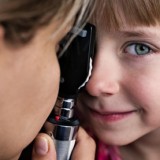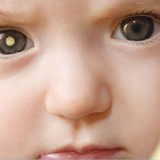In Honor of Alfred G. Knudson, a Pioneer in Retinoblastoma Research
Alfred G. Knudson will always be remembered for his groundbreaking research in cancer, specifically pediatric retinoblastoma. His work helped to decode this mysterious disease, examining why and how certain forms of cancer attack in relation to the patient’s genetics. On July 10, 2016, he passed away in his Philadelphia home at the age of 93. Cancer Genetics Advancements During the 1970s, scientists observed that some forms of cancer are hereditary. However, they weren’t able to explain how some with a family history could remain cancer-free, while others with no family history could be struck by the disease. Dr. Knudson’s work presented the medical community with a breakthrough in understanding the underlying mechanics of cancer genetics. His research has paved the way for a number of subsequent cancer advancements. Focus on Pediatric Retinoblastoma To study the conundrum of cancer genetics, Dr. Knudson opted to examine cases of pediatric retinoblastoma. He chose this form of cancer due to the fact it develops early in life, which means that patients are less likely to have experienced possible genetic mutations that adults may experience over their lifetime. He viewed retinoblastoma as a relatively pure form of cancer, and studied and statistically analyzed the two types of retinoblastoma: hereditary and non-hereditary. Cancer’s “Two-Hit” Hypothesis In 1971, Dr. Knudson published his world-famous findings on the “two-hit” theory of cancer genetics, also referred to as the Knudson hypothesis or the multiple-hit hypothesis. He theorized that hereditary retinoblastoma patients inherited one or more damaged genes from a parent, which is not enough to result in cancer. However, cancer may develop after a “second hit” to the patient, which may be a DNA defect, radiation exposure, and the like. In non-hereditary retinoblastoma, the patient has healthy parental genes, and therefore must experience two genetic hits. Later, he used this research to theorize the existence of antioncogenes, or genes that stop cells from becoming cancerous. A decade later, this was confirmed, and they are now known as tumor suppressor genes. As years passed, Dr. Knudson’s work in pediatric retinoblastoma laid groundwork for all types of hereditary cancer. He’s opened the doors for early detection and prevention in individuals with known cancer predispositions. Knudson’s Accolades As one of the most renowned researchers of the field, Dr. Knudson has garnered esteem from the world over. In 1998, he received the Lasker Award, which is referred to as the American Nobel Prize. In 2004, he won the Kyoto Prize that recognized him for opening the horizon for cancer genetics and playing a key role in its developments. Dr. Knudson’s dedication and service continues to garner respect and esteem from the medical community. To learn more about his life and work, visit the American Association for Cancer...
read moreAugust Is Children’s Eye Health & Safety Month
As we approach the new school year, parents are taking steps to ensure that their little ones are well-prepared and cared for. Enrollment forms, immunizations, new clothes and school supplies are on everyone’s checklist. However, it’s important to add a new item to the list: their eye health. In observance of Children’s Eye Health & Safety month, we encourage all parents to set up an eye exam to ensure that there are no potentially dangerous issues that have gone unseen and untreated. Even outside of the eye doctor’s office, there are some simple steps to take to keep eyes safe and healthy. When to Start Regular Eye Exams Many parents may think that eye exams are for older children or teenagers. However, the American Optometric Association recommends that regular kids’ eye exams should begin as early as six months of age. This is especially true for children who are considered “at risk” for certain eye conditions. In these cases, more frequent checkups may be recommended by a professional. These risk factors may include, but are not limited to: Family history of retinoblastoma, metabolic or genetic disease, or congenital cataracts Prematurity, oxygen issues at birth, or low birth weight Maternal infection during pregnancy, such as rubella, herpes, or venereal disease High refractive error Strabismus, or eye alignment issues such as crossed eyes Amblyopia, also known as lazy eye Common Signs of Vision Problems Especially in children who are too young to speak and communicate issues, it may be difficult for parents to decipher potential vision issues. This is why it’s important to monitor children and schedule an appointment with a professional when any potential warning signs are observed. These warning signs may include frequent eye-rubbing, squinting when trying to read or see objects, head-tilting or turning when looking at objects, and wandering eyes – to name a few. Kids’ Eye Safety Tips Take a look at some safety tips that can help keep your child’s vision in top condition: During sports, always use proper protective eyewear Ensure that all toys are age-appropriate Keep chemicals and sprays out of reach of children Practice safe use of items such as pencils, scissors, and rubber bands Place pads or cushions on sharp corners around the house Use locks on drawers and cabinets within reach of small children If your child has experienced complications due to retinoblastoma, despite your best efforts to prevent them, call us at 407-244-3000 to discuss your potential legal...
read moreCan a Camera Help Catch Retinoblastoma?
No matter where you’re from across the globe, photographs likely hold a special significance for you and your family. While they’re an ideal way to capture moments and create lasting memories, they can also be unexpectedly life-saving. Research shows that digital photos of children can help parents to spot a key symptom of pediatric retinoblastoma called leukocoria, or “white eye.” Learn more about this important sign, the research surrounding it, and how you can help protect your children by snapping a picture. What Is Leukocoria? Leukocoria, also called white pupillary reflex, is a white reflection that shows in the retina of the eye. Leukocoria is caused by a number of conditions, such as retinoblastoma, cataracts, retinal detachment, retinal malformation, and more. It resembles “eyeshine,” the phenomenon that occurs in cats and other animals that have an eye structure called tapetum lucidum, which causes the appearance of glowing when photographed with a flash setting on the camera. Because humans lack a tapetum lucidum, a white reflection in the eyes of a photograph is an unusual occurrence that often indicates that something is wrong. Study Results In 2013, Harvard University and Baylor University teamed up to study white eyes and pediatric retinoblastoma. They looked at 7,000 photos of children who did and didn’t have the condition. Not only could they use white eye to indicate that the children had a tumor, they could also predict the severity and stage of the condition. The researchers explained that the saturation of the pupil’s reflection changes depending on the tumor’s size. An Effective Form of Detection Pediatric retinoblastoma can be difficult to detect and diagnose. Coupled with the need for the condition to be diagnosed and treated as early as possible, it’s important for parents to stay vigilant and ensure that they’re looking out for any signs possible. Fortunately, looking for white eye in photographs has been labeled by researchers as one of the most effective “do-it-yourself” diagnostic techniques for showing signs of the condition. In fact, with this knowledge becoming more widespread, specialists are finding that the majority of pediatric retinoblastoma cases have been initiated by parents spotting leukocoria and scheduling an eye exam for their children. Early detection is the best protection against the potentially devastating effects of pediatric retinoblastoma. However, for those who feel that their children have suffered unnecessarily due to malpractice, please call us today at 407-244-3000 to discuss your legal...
read moreDetecting Pediatric Retinoblastoma
Pediatric retinoblastoma is a fast-growing eye cancer that affects approximately 1 in every 15,000 babies and young children. Pediatricians are supposed to screen for the disease and look for the presence of a white reflection in the eye in every checkup after the birth of the child. Unfortunately, the development of an infant’s eyes is often overlooked by parents and pediatricians. We’ve seen cases where medical negligence such as diagnosis errors, delayed diagnosis, or failure to diagnose allowed the cancer to progress without proper treatment. The result can be blindness, or even death. Professional Eye Care InfantSEE, a public health program, is designed to ensure that eye and vision care becomes an essential part of infant wellness care to improve a child’s quality of life. The program offers a free comprehensive infant eye assessment between 6 and 12 months of age as a no-cost public service. The service was developed due to the widespread lack of proper infant eyecare. New Developments Two years ago, a new app called White Eye Detector came to market that aids in early detection of eye diseases. The most common sign of pediatric retinoblastoma is a white glow in the center of the eye. Typically, parents are the first to detect the disease through observing the eye’s white appearance through pictures of the child. White Eye Detector is able to scan for white eyes by scanning all your phone’s pictures of your child and detecting “white eye.” Also, with the flashlight feature on, you can hold up the phone to your child’s eyes, and the software will detect “white eye” as the camera hovers near the baby’s face. Trust Your Gut Attorney William Ruffier, who specializes in these cases, adds that “another sign parents should look for is strabismus, or crossed eyes. In the cases where I’ve represented children suffering a retinoblastoma, the parents usually commented that they thought something was unusual about their child’s eye. As a parent, trust your gut and seek medical attention for your...
read moreCongenital Cataracts in Children
Congenital cataracts are a clouding of the lens of the eye. About three out of every 10,000 babies born have or develop congenital cataracts. Depending on the severity and placement of the cataracts, vision may be hampered and cataract surgery may be required. Congenital Cataract Causes Congenital cataracts are caused by abnormalities in the lens development during pregnancy. These abnormalities in development can be caused by hereditary tendencies, diseases suffered by the mother during pregnancy, trauma, or drug reactions. Tetracycline antibiotics given to treat infections during pregnancy have been linked to an increased risk of congenital cataracts. Types of Congenital Cataracts There are several different types of congenital cataracts that may affect the vision to varying degrees. Cerulean cataracts affect both eyes and are characterized by small, bluish dots. Cerulean cataracts usually do not affect vision or require surgery. Nuclear cataracts appear in the central area of the lens and may require treatment. Anterior polar cataracts are located in the front part of the lens and are usually small enough to avoid surgery. Posterior polar cataracts appear in the back portion of the lens. Effects of Congenital Cataracts Failure to treat cataracts may result in the development of amblyopia. Commonly called a “lazy eye” amblyopia can affect visual acuity and if left untreated can eventually cause blindness. The inability to focus caused by amblyopia can affect a child’s learning ability. The difference in appearance caused by amblyopia can affect a child’s self image and self esteem. Congenital Cataract Treatment Congenital cataracts that are small and do not affect vision may not require treatment. If cataracts affect vision or appear in only one eye, cataract removal surgery may be necessary. After the surgery, an artificial intraocular lens (IOL) may be placed in the eye. If an IOL is not placed, the child will need to wear contact lens so that visual development is not hindered. If amblyopia had begun to develop, physicians may recommend that an eye patch be worn to strengthen the weaker eye. Cataract Surgery Concerns There is some concern about when to perform cataract surgery on very young children. Some experts believe that it is best to remove cataracts from children’s eyes between six weeks and three months of age to prevent worsening conditions. However, there are dangers to introducing children to anesthesia at that young age. Development of high eye pressure caused by very early surgeries has also been linked to development of secondary glaucoma. Sources: “Cataract.” American Association for Pediatric Ophthalmology and Strabismus. American Association for Pediatric Ophthalmology and Strabismus, 1 Jan. 2014. Web. 15 Nov. 2014. <http://www.aapos.org/terms/conditions/31> “Congenital Cataract.” MedlinePlus. U.S. National Library of Medicine, 7 Nov. 2014. Web. 15 Nov. 2014. <http://www.nlm.nih.gov/medlineplus/ency/article/001615.htm> Haddril, Marilyn. “Congenital Cataracts.” All About Vision. Access Media Group, 1 July 2014. Web. 15 Nov. 2014....
read moreInfant Vision Development
When babies are born, their vision is not completely developed. It takes several months for a baby’s vision to develop and for the baby to learn to process the sights that are being seen. Developmental delays and other issues may be warnings of underlying medical problems. Newborn’s Vision Research shows that babies are very near-sighted up until around three months of age. Faces and shapes appear blurry when outside of the range of eight to twelve inches away. Color vision is also developing, so babies may not be able to distinguish and appreciate softer colors such as pastels. Infant Focusing Abilities Infants are born with the ability to focus on visual stimuli that is near or far. However, the ciliary muscles that control this ability do not become very strong until those muscles have been exercised. It usually takes babies about two months to develop the ability to control the ciliary muscles enough to focus at will. This ability to focus may develop separately from other aspects of vision and babies may be able to either see more clearly or focus more effectively first. Visual Acuity There are several different components in the eye and the brain that are responsible for visual acuity. These parts may mature at different paces, making it difficult for the baby to see a well-focused image, even when the baby has developed the skills needed to focus well. In the retina, the fovea is responsible for deciphering the details seen. If the fovea is not mature, it may result in even the most well-focused images appearing blurry. Regular Development Milestones At about three months of age, babies have usually developed the ability to follow a moving object with the eyes. By this time, babies are generally able to focus and coordinate both eyes together to see. By about eight months, babies will generally begin to develop depth perception and color vision. By twelve months, babies usually have rudimentary hand-eye coordination. Crawling will help to strengthen hand-eye coordination. By two years of age, babies should be able to judge distances and hand-eye coordination should be well developed. Signs of Eye Complications While babies must develop the skill to coordinate both eyes, if one eye consistently turns out or in it may be a sign of muscular or vision complications. Sensitivity to light may be a sign of elevated pressure within the eye. Redness, constant tearing of the eyes, and the appearance of crust around the eyes or on the eyelids may be signs of infection or issues with tear duct development. If the pupil of the eye appears to have a white or red spot when the light hits it, it may be indicative of certain eye cancers. Sources: Gavin, Mary. “The Senses and Your 1- to 3-Month-Old.” KidsHealth. The Nemours Foundation, 1 Sept. 2011. Web. 14 Nov. 2014. <http://kidshealth.org/parent/pregnancy_newborn/senses/sense13m.html#> Hamer, Russell. “What Can My Baby See?” What Can My Baby See? The Smith Kettlewell Eye Research Institute, 1 Nov. 1990. Web. 14 Nov. 2014. <http://www.ski.org/Vision/babyvision.html> “Infant Vision: Birth to 24 Months of Age.” American Optometric Association. American Optometric Association, 1 Jan. 2014. Web. 14 Nov. 2014. <http://www.aoa.org/patients-and-public/good-vision-throughout-life/childrens-vision/infant-vision-birth-to-24-months-of-age?sso=y> “Normal Vision Development in Babies and Children.” EyeSmart. American Academy of Ophthalmology, 1 Jan. 2014. Web. 14 Nov. 2014....
read more





















